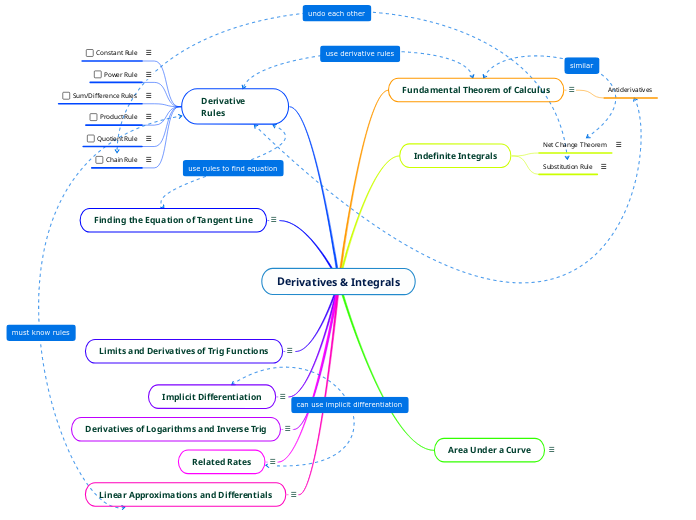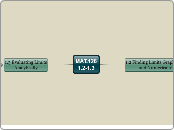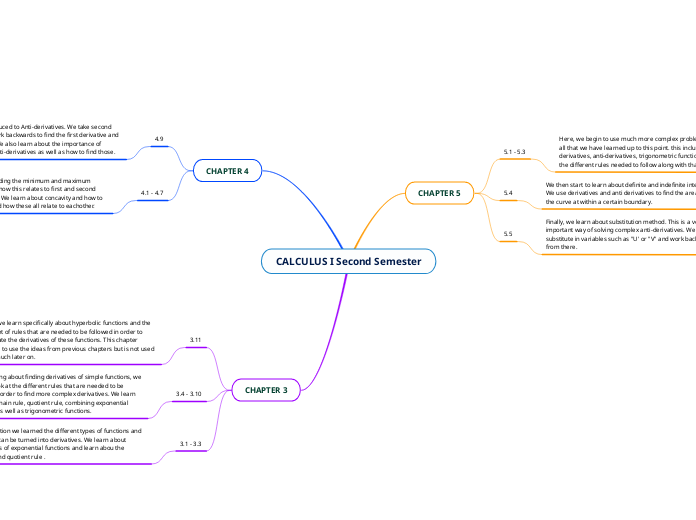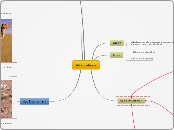Calculus III
Applications of Derivatives
Motion Along a Line
acceleration
instantaneous speed
I v(t) I
velocity
Linear Approximations
for all points near a
Tangent and Nomal Lines
Maximum and Minimum
First derivative.(Find the criticle points)
Related Rate
f'(t)
L'Hopital's Rule
ε-δ definition of continuity
Derivatives
Second Derivative Test
First Derivative Test
Critical Points
Inflection Points
f ''=0 or undefined. Then f '' changes sign in the vicinity of those x-values.
Absolute Extrema
Theorem
Suppose that f is continuous and has exactly one relative maximum(minimun) on an interval I,say at a then f(a) is the absolute maximum(minimum) of f on I.
Relative extrema
f 'changes sign
Interpretation of f "
If f ''(x)=0, f straight line
If f ''(x)<0, f concave down
If f ''(x)>0, f concave up
Interpretation of f '
If f'(x)=0, f constant
If f'(x)<0, f decreasing
If f'(x)>0, f increasing
Rules of Diferentiation
Inverse funciton
Quatient Rule
Product Rule
Chain Rule
Higher derivatives
Addition and subtraction
Constant multiples
Differentiability
A function is said to be differentiable at xo if the limit above exists
Relationship between continuity and differentiability
If f(x) is differentiable in (a.b), f(x)is also continuous in (a.b). The reverse is not true.
Definition
Limits and Continuity
Continuity
Continuous on [a,b]
f is continuous from the left at b
f is continuous from the right at a
f is continuous on(a,b)
Continuous at x=c
exists
f(c) is defined
Limit
2 sides limit
Vector Functions
Tangent and Normal Vectors
Normal Vector
Tangent Vector
Polar Functions
Arc Length of a Polar Curve
Tangent Lines to Polar Curves
Conversion with Cartesian equations
x=rcosθ, y=rsinθ
Parametric Functions
Tangent Lines to Parametric Curves
singular points
vertical tangent line
horizontal tangent line
Arc Lengh of a Curve
y=f(t), x=f(t)
y=f(x)
Converting to Cartesian Form
Finding the Derivative
2nd
1st
Applications of The Theorems
MVT
IVT
EVT
Theorems
Rolles's Theorem
Let f be continuous on the closed interval [a,b] and differentiable on the open interval (a,b). If f(a)=0 and f(b)=0, then there is at least one point c in (a,b) such that f'(c)=0
A special condition of MVT
Mean Value Theorem
Squeeze Theorem
By squeeze theorem, the limit of f(x) as x tends to c will also be L.
If the limits of g(x) and h(x) as x tends to c are the same, value L.
Let the above condition be true.
Intermediate Value Theorem
If a funtion f is continuous on[a,b] and k is a number such that f(a)<k<f(b), then there exists a number c in[a,b]such that f(c)=k.
Extreme Value Theorem
If a function f is continuous on a finite closed interval [a,b], then f has both maximum and an absulute minimum.









